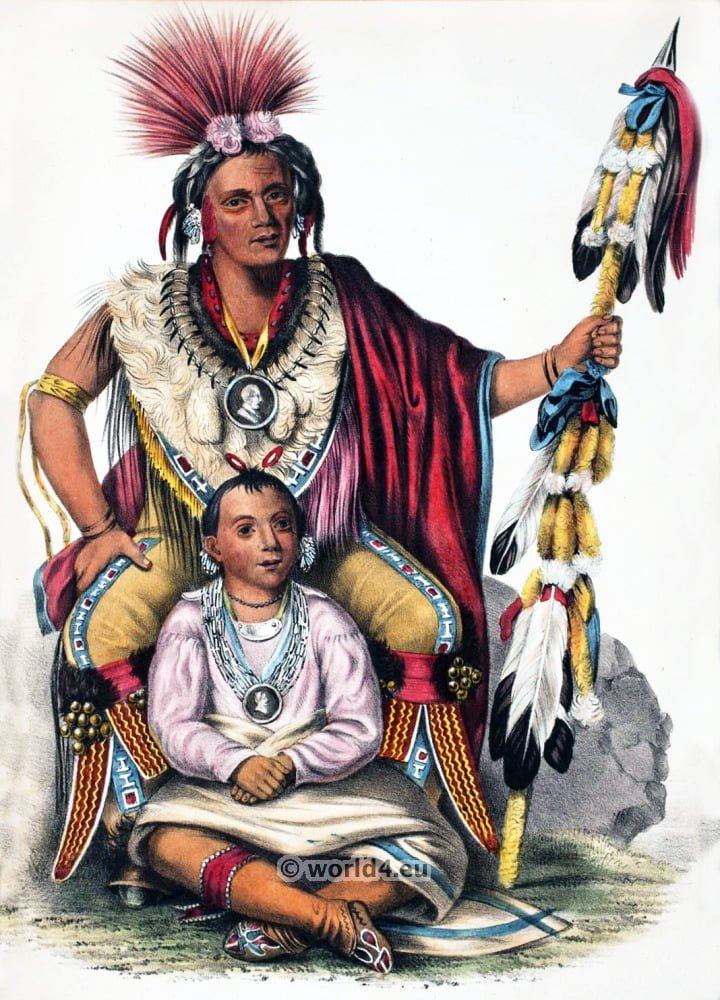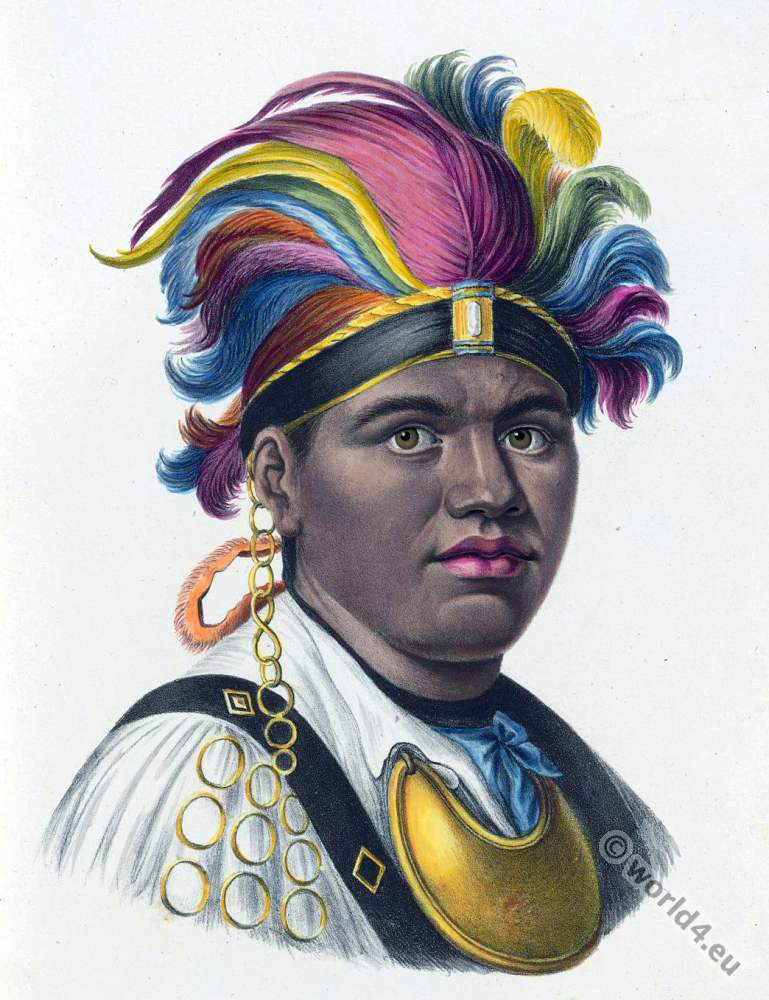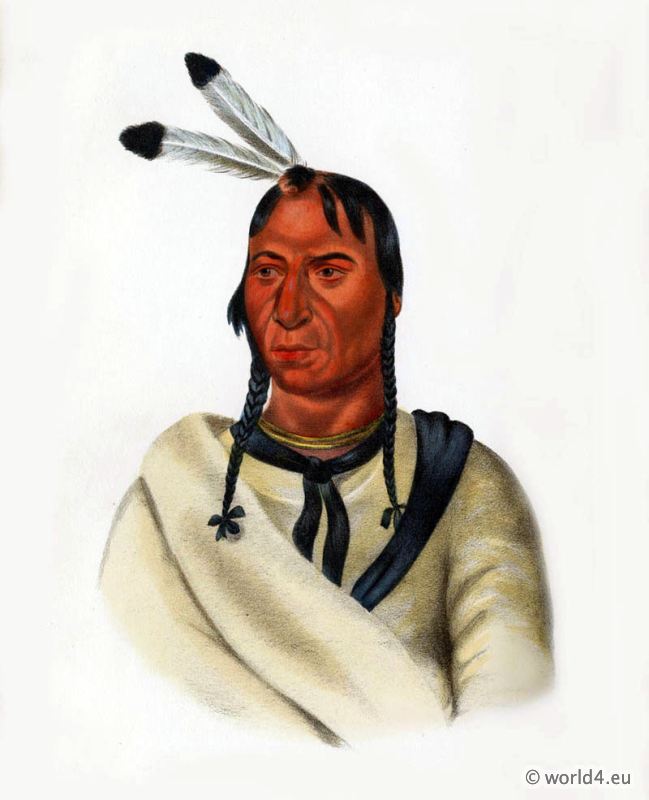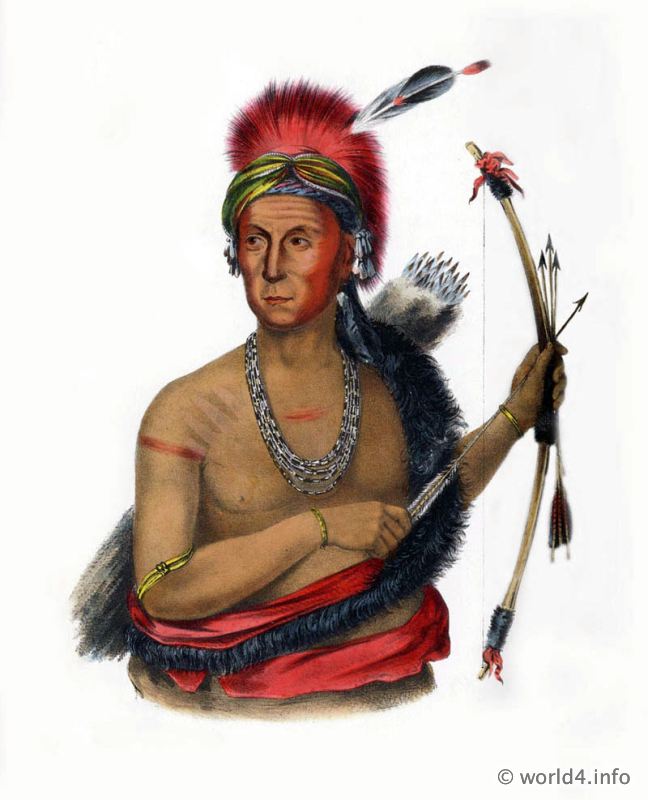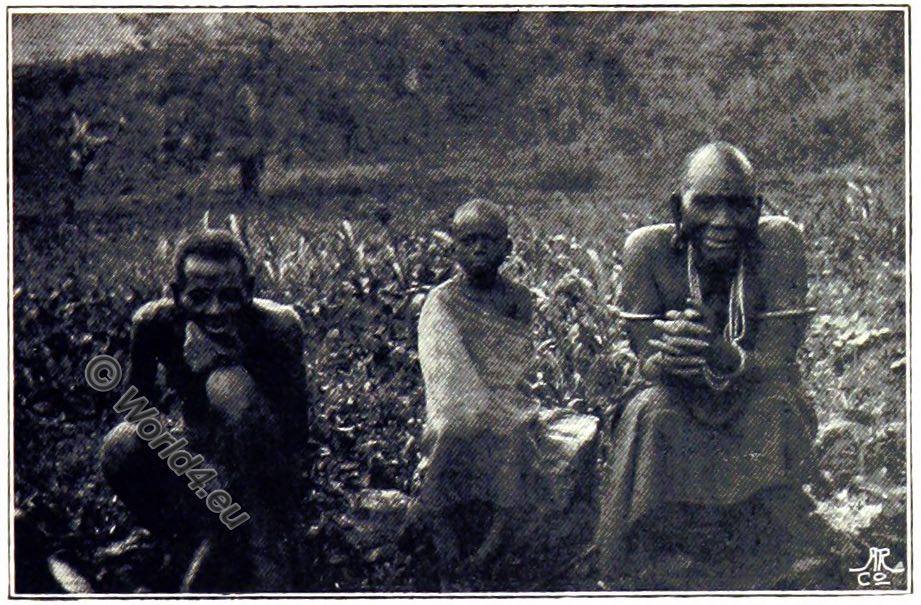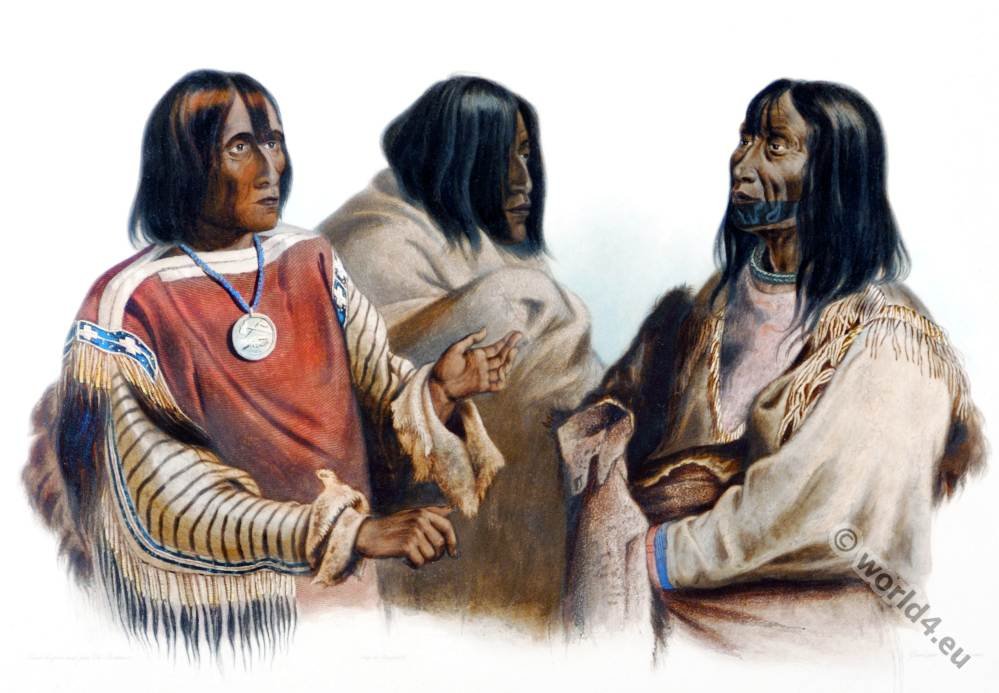
Blackfeet tribes.
Chief of the Blood Indian. War chief of the Piekann Indians. Koutani Indian.
“The Blackfeet form a numerous nation which is divided into three tribes speaking one and the same language. These tribes are: 1. The Siksekai or Seksekai the Blackfeet properly so called 2. The Kahna or Kaenna the Blood Indians . 3. The Piekanns.”
The Kainai or Kaenna (Kaina – “People of many chiefs”, ie “the proud”, English pronunciation:. “G-ai-nah”) or Káínawa (Akáínaa – “Many chiefs”, derived from aká – “many” and nínaa- “chieftain”) are one of the three First Nations of Nitsitapii (Blackfoot) in the south of the Canadian province of Alberta. The enemy Plains Cree said they were Miko-Ew (“the bloody, which stained with blood”, ie “the bloodthirsty, cruel”), European traders and settlers took over the name and therefore called it mostly as a Blood or Blood Tribe.
Source: Maximilian, Prince of Wied’s Travels in the Interior of North America, during the years 1832–1834″ by Prince Maximilian of Wied. Illustrator: Karl Bodmer. Engraver: Martens. Published by Ackermann & Cie, 96 Strand, 1st March 1841
Related
Discover more from World4 Costume Culture History
Subscribe to get the latest posts sent to your email.

